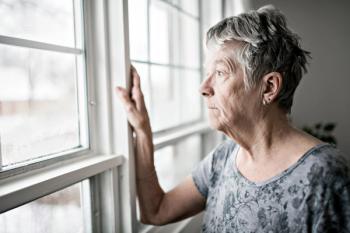
- Managed Healthcare Executive February 2019 Issue
- Volume 29
- Issue 2
The Biggest Barrier to Home Healthcare
As the U.S. population ages into declining health, accompanied by mobility challenges in getting to healthcare providers, innovative solutions to care include bringing the health system and medical procedures to patients’ homes.
There are myriad factors driving interest in home health. For one, there are 46 million people who are 65 years of age and older in the United States. That number will jump to more than
Add to that the soaring cost of treating chronic conditions-Diabetes alone cost
Related article:
Preventing hospital-acquired conditions such as sepsis is also on the mind of healthcare executives. For example, severe sepsis impacts more than 1 million Americans each year-and 15% to 30% of those people
And all of this is taking place in a country where as much of one-third of healthcare spending may be
Frail, sick patients increase healthcare costs
Approximately 5% of patients drive 40% of a provider’s costs, says Michael Le, MD, co-founder and chief medical officer at Huntington Beach, California-based
Who’s helping to drive that spend? It’s older patients with mobility challenges who can’t travel to their physician’s office for follow-up appointments. These are patients, says Le, who stay home and “tough it out.” Then it gets so bad that they call 911 and get admitted to the emergency room, instead of getting care from their primary-care provider.
Repeated visits by very sick and frail patients to the emergency room are bad for continuity of care. That’s why it’s valuable to determine those patients who are frailest and in the most need of support and to bring the health system and medical procedures to patients’ homes, he adds.
Bringing care to sickest patients
Landmark Health employs a variety of clinicians, including nurse practitioners, physician assistants, and behavioral health specialists (such as psychiatrists and social workers), to provide around-the-clock home-based care to 26,000 patients on an urgent or scheduled basis. Landmark Health contracts with payers to provide this care to members.
The majority of its patients are aged 80 years or older, but Landmark Health also serves very sick patients in their 20s and 30s, says Le. On average, patients have eight chronic conditions, such as congestive heart failure,
Most patients receive a home visit once a month and three phone calls per month; the initial visit lasts an hour and follow-up visits run about 45 minutes. That’s in addition to visits by care team members to respond to urgent medical events around the clock.
Landmark Health provides coverage-and is 100% at risk for-82,000 patients across 13 states. In some of its more established markets, the organization is engaging with 55% to 60% of covered patients. Since the company was started in 2013, it has worked with more than 30,000 patients.
Related article:
Here’s how their care approach works: Care providers can test patients’ blood-glucose levels, do an inventory of their medicine cabinets, measure blood pressure, draw blood, check labs, and administer antibiotics and steroids in the home. Landmark Health partners with local imaging providers for X-rays and ultrasounds to provide imaging services within patients’ homes.
These are patients who have a medical-loss ratio of more than 100%, adds Lee. That means payers are losing money on them, largely because they’re going to the hospital so often. The patients served by Landmark Health typically have a 20% to 30% medical-loss ratio, and they have a 50% lower morality rate than patients who aren’t engaged.
Piloting home health delivery
One of the biggest challenges with home health is getting paid for that care. But that doesn’t mean providers aren’t working hard to figure it out.
Case in point:
Related article:
“Proof of concept is our current goal [and] focusing on providing high-quality care while the patient is at home … as well as progress in improving total medical expense as a system,” says Louis Jenis, MD, chief medical and innovation officer.
Patients are selected for home health for two reasons: they’re “super utilizers” of the emergency room or they don’t show up for follow-up appointments with their primary care providers regularly.
The pilot, which began in April, serves 60 patients-some of whom are on their third scheduled home visit. The average patient is aged 85 years and most patients are women. It involves sending a nurse practitioner into the patient’s home. The patient’s primary care physician refers the patient to the practice’s nurse practitioner for home visits.
Its home health program is still in a pilot phase, which means cost and quality measurements are currently unavailable. But Jenis says the home care program is a fundamental part of the hospital’s primary care strategy. “Our [primary care providers] are relieved to have patients seen and chronic conditions are now being managed in the home. Our patients are extremely grateful,” he adds.
Technology can help
Many older patients, in particular, prefer to be home and surrounded by their families, says David Levine, MD, MPH, a physician and researcher in the division of general internal medicine at Boston’s
It also helps patients avoid adverse events such as falls or hospital acquired infections. Levine adds that there’s a finite number of beds for sick patients, and that’s why sending clinicians into patients’ homes-aided by technology-can help. In this program, a doctor and nurse team travel to the patient’s home.
When a patient is stabilized in Brigham and Women’s Hospital’s emergency room, their care team then decides-based on the patient’s needs and proximity to the hospital-that they’re a candidate for home-based visits. That entails regular monitoring and home visits between two and five times a week. Supplementing that care is VitalPatch, a patch that monitors patients’ vital signs, such as heart rate, skin temperature, fall detection, and respiratory rate. That data is shared with Brigham and Women’s Hospital’s care team.
Related article:
Here’s how that works: There’s an 85-year-old patient with the flu, who requires oxygen and antibiotics, in addition to regular monitoring. If the patient experiences a faster heart rate, it would trigger the team to adjust their treatment plan, says Levine.
His team has used this device and conducted home visits with 300 patients since 2016. A pilot study including 20 patients-nine of whom were treated at home and the remainder were treated in the hospital-was
Extending best practices to the health network
Increasingly, providers are reworking pre-operative education and post-surgical recovery for joint replacement patients. Oakland, California-based Kaiser Permanente has created a playbook that allows providers in each of its different markets to select from one of three post-surgical recovery paths, based on the individual patient’s needs.
Leading Kaiser Permanente’s
Still, Koplan acknowledges that falls, in particular, can be an issue in patients’ homes. That’s why a safety care plan is done in patients’ homes before the surgery, to assess uneven floor surfaces that could cause falls.
Her work to provide best practices for orthopedic teams for total joint surgery started about three years ago. And the different approaches, which range from no nights in the hospital to one night to two or more nights after the surgery came from the health network’s orthopedic surgeons.
The number of nights a patient stays in the hospital after their surgery depends on a variety of factors, which include number of comorbidities, support within the home, and the home safety evaluation. The decision is ultimately the result of shared decision-making between the patient and their surgeon and the rest of the clinical team.
Related article:
Koplan adds that care planning is an integral part of each of the three paths. For example, patients will need access to follow-up appointments and some patients will receive that follow-up care in their homes.
Because Kaiser Permanente operates in seven markets-each of which has access to different resources-these steps may happen differently, she says. For example, a home safety assessment may be done in person or by phone by a nursing care coordinator, who also assesses the family and social support the patient will have in the home environment.
Still, the variables that help orthopedic surgeons and their patients to choose the appropriate post-surgery path are laid out in a playbook that’s shared throughout the network. The playbook was created by a multidisciplinary team that includes orthopedic surgeons, anesthesiologists, nurses, care coordinators, physical therapists, and home health service providers, in addition to patient input.
Practices outlined in the playbook range from pre-operative care (such as patient and family health education), to perioperative care (such as blood management protocols), to post-operative care, which can include home physical therapy visits.
Koplan says her role is to extend best practices throughout Kaiser Permanente. As a result of this work, the average length of stay in the hospital for patients is trending downward, while quality and safety have been maintained. The feedback from clinicians has been “fantastic,” she says.
Payment challenges and the future
Getting paid for care provided in the home is a challenge. That’s why Newton-Wellesley Hospital is financing its pilot and Brigham and Women’s Hospital is sharing the payment burden with a payer.
The difficulty stems from providers getting paid less for care when it’s delivered outside the hospital. That’s according to Michael Brookshire, a Dallas-based partner at consulting firm
Landmark Health has been successful because their model of caring for sick and frail patients in the home is paid for by the payer, he adds. “That kind of model is very difficult for a traditional hospital system to create. It’s just a very different payment structure.”
Related article:
Delivering home health well is another challenge. Brookshire points again to Landmark Health’s ability to build home health as its core business.
Levine acknowledges that lack of payer support for home health makes this work difficult. But he believes payers will receptive once more research is done on the cost and quality impacts of home health. For example, if an emergency room visit costs a payer $10,000 and care in the home costs $9,500, the payer may be willing to share the savings with the provider. Levine hopes to see more payers embrace home health within the next five years-or even sooner.
Aine Cryts is a writer based in Boston.
Articles in this issue
over 6 years ago
Managed Care Technology Survey 2019over 6 years ago
The 4 Biggest New Areas to Focus on in 2019over 6 years ago
The State of Biosimilars in 2019over 6 years ago
Four Trends Health Execs Need to Follow in 2019almost 7 years ago
Six Healthcare Technologies Coming in the Next 10 Yearsalmost 7 years ago
The Impact of Big Data on Medical DecisionsNewsletter
Get the latest industry news, event updates, and more from Managed healthcare Executive.

















































